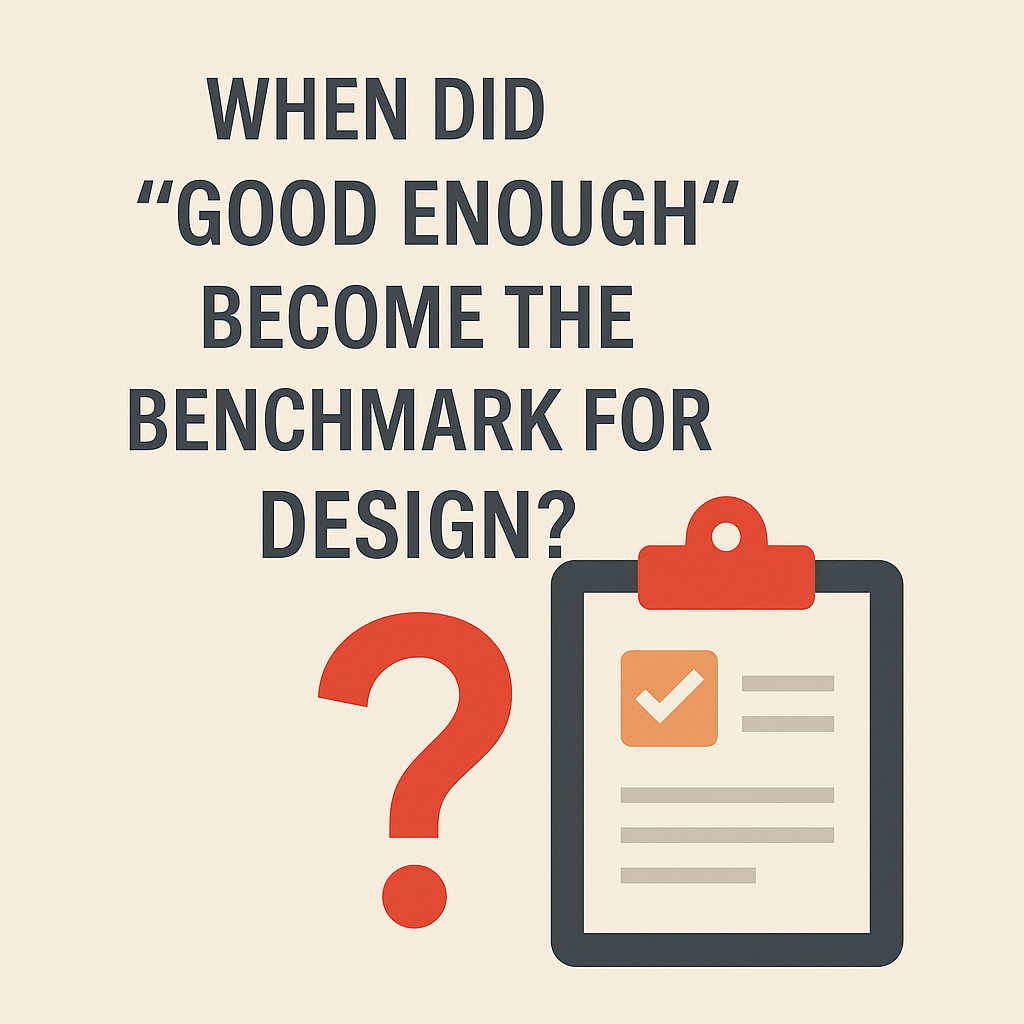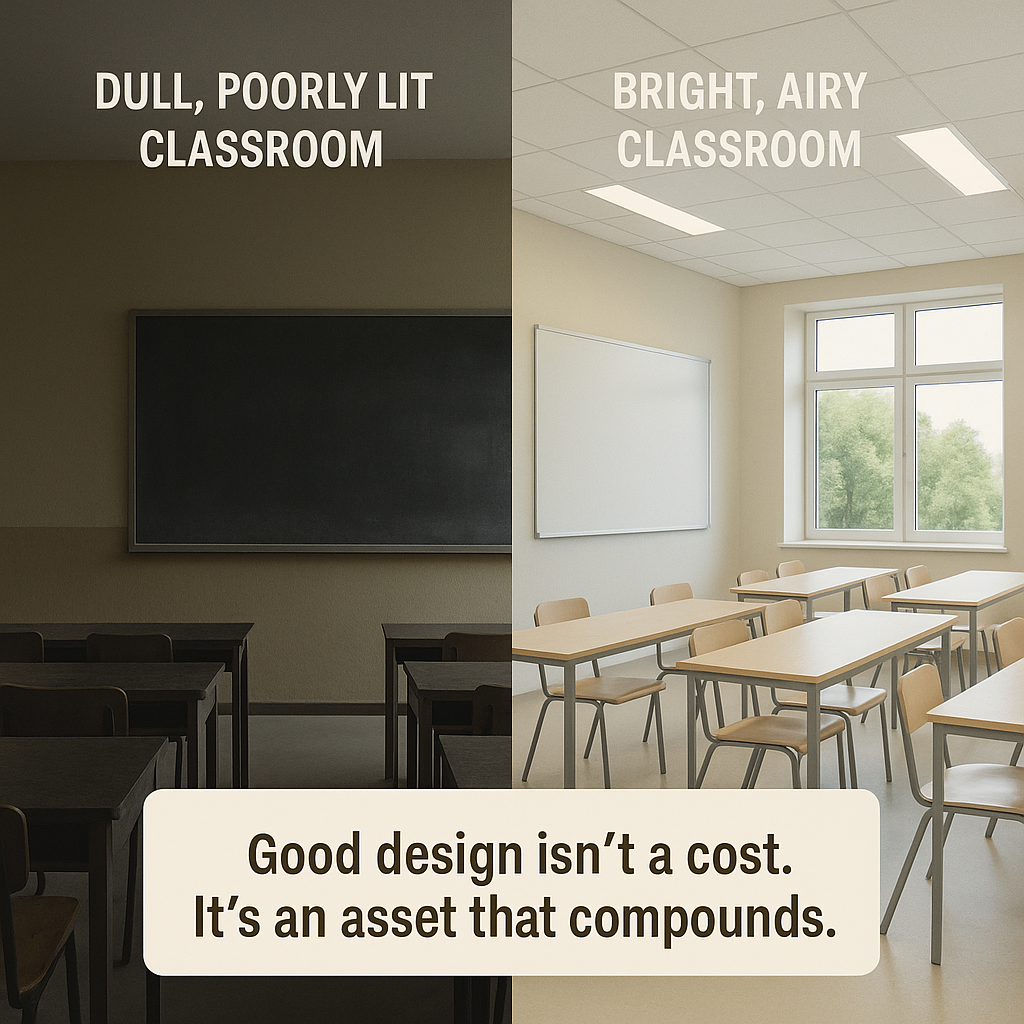when did “good enough” become the benchmark for design in india’s urban landscape ?

Across India’s urban landscape, be it a government school, a corporate office, a mid-tier hospital, or a high-rise apartment, one disturbing trend persists. The primary objective behind most building projects appears to be minimal: ensure it stands, make it functional, and keep it within budget. Once complete, these projects are celebrated with fanfare, ribbon cuttings, and congratulatory headlines. Yet, seldom is the more important question asked: Do these spaces actually improve lives?
The reality is hard to ignore. Much of our built environment is designed for survival rather than for human flourishing.
In many cases, “good enough” has quietly taken the place of “good.” Excellence in design, particularly design that enhances health, productivity, or overall well-being, is still seen as an indulgence, not a necessity.
Cost Over Comfort: The Standard Response
The conversation between architects and clients often follows a predictable script. Proposals to improve natural lighting, indoor air quality, thermal comfort, or acoustics are often met with a single question: “How much extra will it cost?” And when told that such upgrades represent a minor fraction of the total project cost, the response is almost always the same: “Still too much.”
This contradiction is striking. Decision-makers who hesitate to invest in performance-enhancing design elements will, without pause, approve the use of Italian marble or reflective glass facades–choices often driven more by aesthetics and status than utility or user experience.
The issue, therefore, may not lie in the availability of design solutions but in how they are communicated. Concepts such as “well-being” and “comfort” are frequently undervalued because they are misunderstood. A shift in narrative is urgently required: one that presents good design not as a moral or aesthetic choice, but as a strategic investment with measurable returns.
The ROI of Better Design in Urban India Landscape
Education Sector
Multiple studies have established a strong correlation between better classroom environments and improved student performance. Factors such as natural lighting, ventilation, and acoustic control enhance concentration and memory retention.

For private and semi-private institutions, this can translate directly into higher test scores, improved reputations, increased admissions, and ultimately, higher fee structures. Design, in this case, becomes an admissions tool.
Healthcare Facilities
Hospitals that incorporate patient-centric design—natural daylight, quiet zones, clear signage, and reduced visual clutter—consistently report faster patient recovery times and higher satisfaction scores. Shorter stays improve patient turnover, while satisfied patients are more likely to recommend the institution. Investing in design becomes an extension of medical care.
Workplaces
Employee well-being directly impacts productivity and absenteeism. Offices that reduce noise, control temperature, and ensure daylight access report better employee performance and engagement. This is not about luxury—it is about operational efficiency. In a knowledge economy, investing in people’s well-being is equivalent to investing in infrastructure.
Real Estate
Buyers and tenants increasingly prefer homes and commercial spaces that offer thermal comfort, natural ventilation, and community spaces. These features fetch higher premiums and reduce vacancy periods. The demand is not just theoretical—buyers may not articulate the science, but their bodies register the comfort. Developers who respond to this are likely to enjoy faster sales and greater brand value.
The Long-Term Payoff of Good Design
Good design should not be seen as an expense, but as an asset that delivers returns over time. Whether it’s reduced operational costs, enhanced human productivity, or increased revenue, the benefits of well-designed spaces are cumulative.
And yet, many Indian buildings continue to prioritise superficial features over meaningful design. The result is an urban landscape filled with structures that may appear impressive in photographs but feel uninspired and uncomfortable in everyday use.
This pattern is no longer sustainable. Poor design decisions made today will impose economic, social, and environmental costs for decades. Efficiency lost due to inadequate planning, health compromised due to poor ventilation, and productivity hindered by acoustic stress are all preventable outcomes if design is taken seriously from the outset.
Reframing the Debate
India does not lack design talent. Nor does it lack ambition. What it often lacks is a clear-eyed understanding of design as a driver of performance and quality of life. Policymakers, developers, and institutional clients must shift focus from short-term savings to long-term value.
The case for good design is not just ethical—it is economic. In a country with over a billion aspirations, the built environment should reflect possibilities, not limitations.
It is time to retire “good enough” as the gold standard, and demand spaces that do more than stand—they should serve, support, and inspire.
Urban Voices is a platform for sharp & contextual writing on how we shape and experience our cities. If you have a story, perspective, or insight on urban design, development, infrastructure, or daily life in Indian cities, we invite your contributions. Join here with your pitch or submission.
